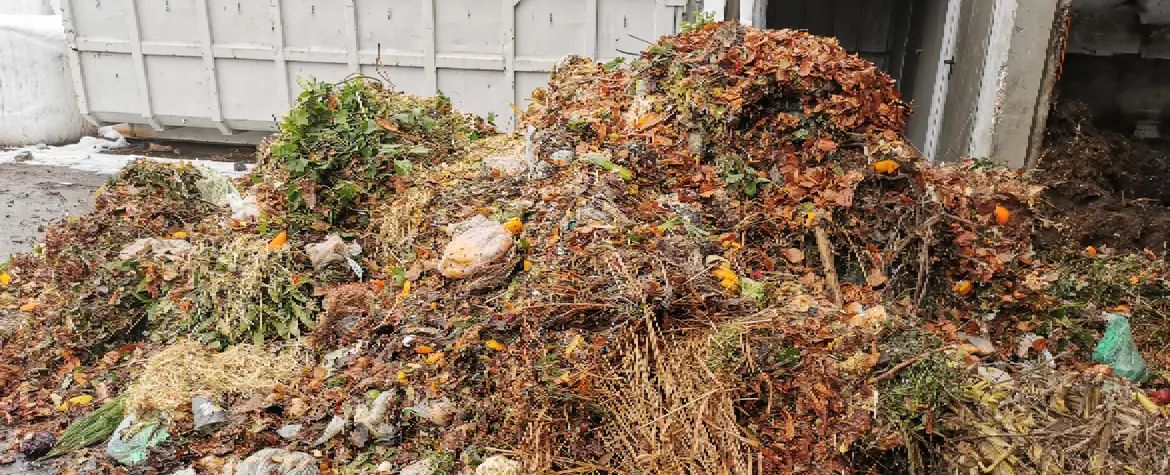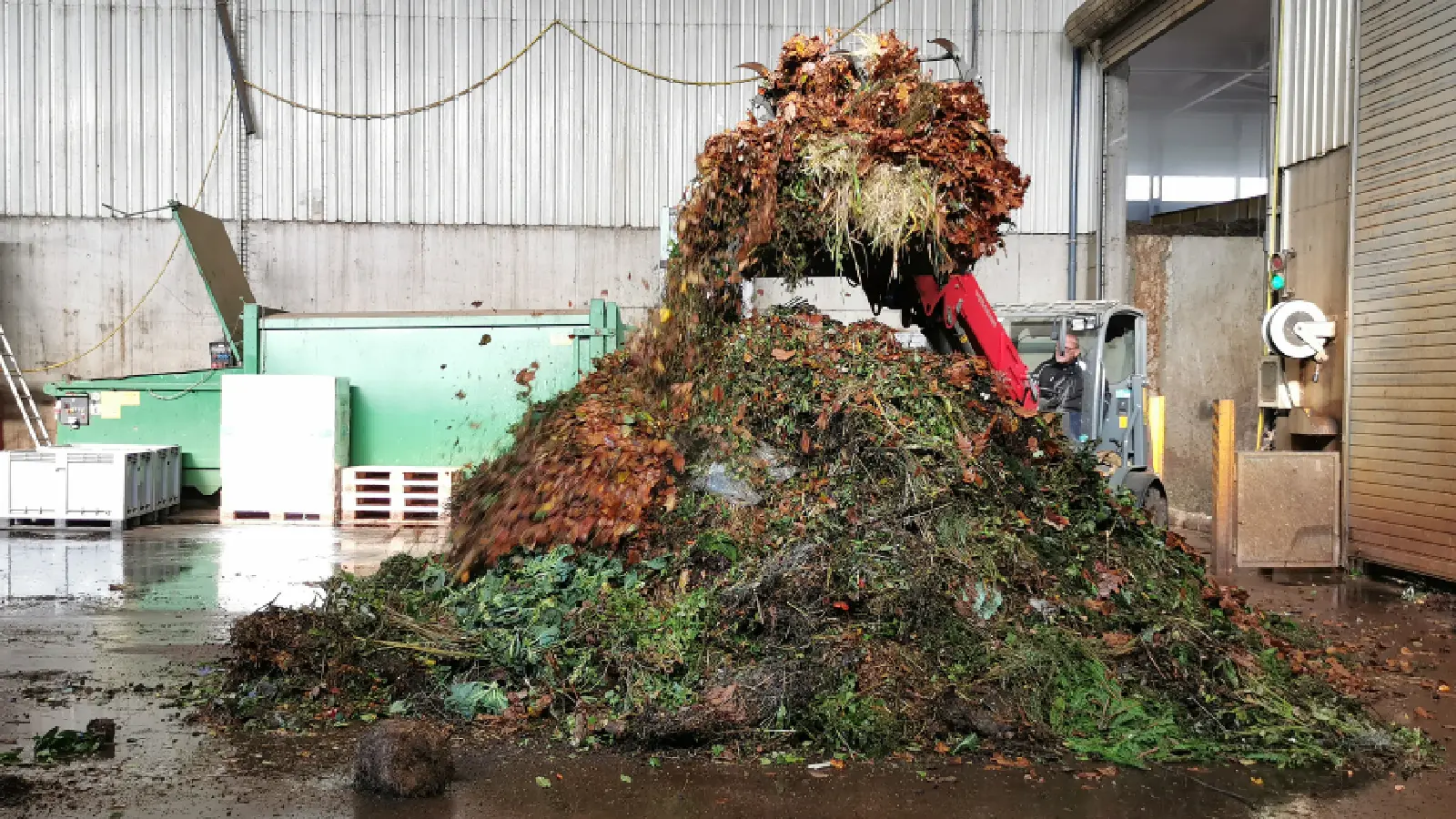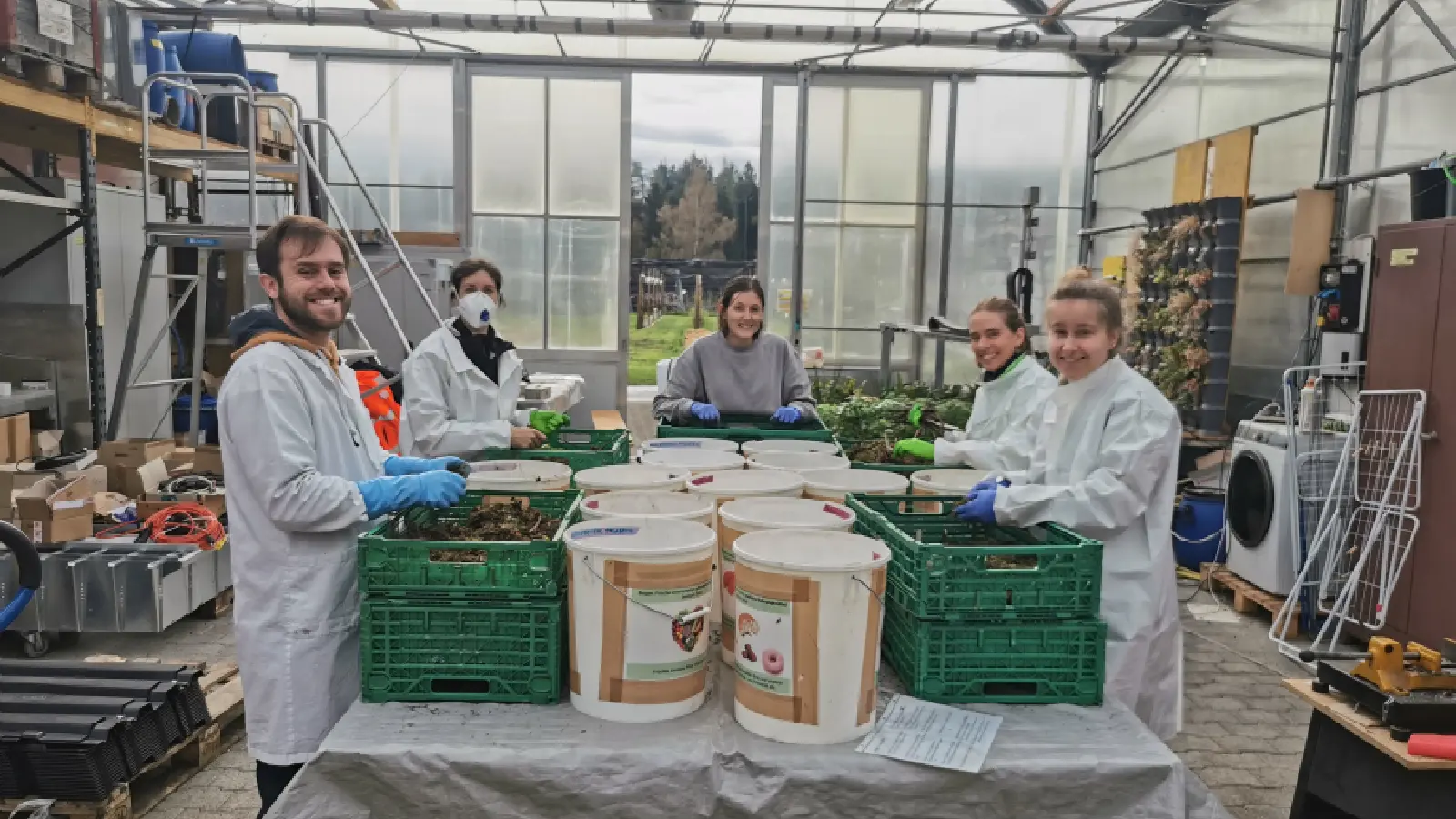Food losses and foreign matter in Swiss green waste 2022/23 (LEMIG-II)
In 2022/23, municipal green waste in Switzerland was examined for the second time. The aim of the project was to determine the type and percentage of avoidable and unavoidable food losses and foreign matter in municipal green waste. For this purpose, green waste from 9 municipalities was examined at 2 different seasonal points in time.

Result
Most of the municipal green waste consisted of garden waste (M±SD: 70±11% FS). The proportion of food losses amounted to 27±11% FS. There tended to be more food losses in urban communities than in peri-urban and rural communities.
Most food losses were kitchen waste (74±7%), followed by cooked and processed other foods (12±5%) and uncooked fruits and vegetables (11±4%). Meat and fish accounted for 2±1%, dairy products, eggs and margarine for 1±0.4%. Around 36% of the food losses could be avoided.
Based on the results of this study, it can be assumed that around 157,000 tons of FS food from households is disposed of with green waste every year. This corresponds to 17.8 kg FS per person and year.
Compared to 2018, food losses in green waste increased by 35%. Between 2012 and 2022, the proportion of food that was disposed of with refuse decreased slightly (refuse bag analysis 2022). The increase in food losses in green waste could therefore be partly due to a shift in disposal from refuse to green waste.
The proportion of total foreign matter in municipal green waste remained roughly the same as in 2018. The proportion of non-degradable plastics increased by 57% FS.
A comprehensive evaluation and discussion of the results is provided in the final report.
Description
Background
Since 2012, there have been increased efforts in Switzerland to quantify waste along the food chain and introduce measures to prevent or recycle it. The Federal Office for the Environment (FOEN) plays a central role in this. It is working to create and regularly update a reliable and uniform database along the entire food chain. As part of the action plan to reduce food waste, the FOEN reports on food losses and ensures that green waste for composting and fermentation is not too heavily contaminated with foreign substances.
Since 2014, studies have been carried out at various levels of the food chain, which show that around a third of all edible food is lost or wasted. In 2018, the composition of separately collected municipal green waste was examined for the first time, including the proportion of food losses and foreign matter. The composition of household refuse is surveyed every ten years, most recently in 2022.
To obtain an overall picture of municipal waste in Switzerland and to check the success of measures against food waste, the composition of separately collected green waste was analysed again in 2022/23.
Aims and objectives
The aim of the project was to analyse the composition of separately collected municipal green waste from Swiss households parallel to the survey of refuse composition. The aim was to determine the proportion of avoidable and unavoidable food losses and the extent to which the green waste is contaminated with foreign matter.
Procedure
- Analysis of the composition of separately collected green waste from Swiss households
- Analysis and assessment of the content of avoidable and non-avoidable food waste
- Analysis and assessment of the content of plastics and other foreign substances
- Analysis of the development over time
Key Data
Projectlead
Deputy Projectlead
Project team
Amanda Maria Gächter, Britta Hölzel, Yves Moser, Katharina Schmid Lüdi
Project status
completed, 11/2022 - 12/2023
Institute/Centre
Institute of Chemistry and Biotechnology (ICBT)
Funding partner
Bundesamt für Umwelt BAFU




